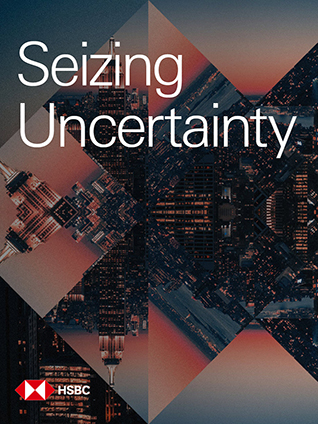Executive summary
Seizing Uncertainty explores decision-making in an era of radical uncertainty – combining academic theory, principles of behavioural science and new primary research conducted across 12 markets.
Foreword
The study provides valuable insight into how we can empower more people with effective decision-making skills, according to Professor David Tuckett, Academic Advisor and Director of the Centre for the Study of Decision-Making Uncertainty at UCL. “Across the world change and uncertainty are the norm, not the exception,” he says. “In this context of radical uncertainty, individuals, businesses and economies are facing heightened complexity and constant disruption. Addressing this gap and encouraging more confident decision-making will be key in extending opportunities and building a fairer and more prosperous society.”
Decision-making model
Drawing on the experiences of more than 17,000 people around the world, HSBC has developed a model that breaks down the anatomy of good decision-making. We have identified two fundamental components of effective decision-making: Mindset and Method.

Key findings
With the world around us changing rapidly, uncertainty is inescapable. We feel it in both our personal and professional lives.
To help the world make better, more confident decisions HSBC and Academic Adviser to Seizing Uncertainty, Professor David Tuckett, has identified the anatomy of a good decision and translated this into a practical guide to help people navigate uncertainty and seize life’s opportunities.

Decision-making guide
When it comes to decision-making in fast-paced, high-stress scenarios, delaying decisions can be more disastrous than making wrong ones. Taking decisive action, whatever state we are in, builds our skills. There is always room to reflect on those choices at a later stage.



